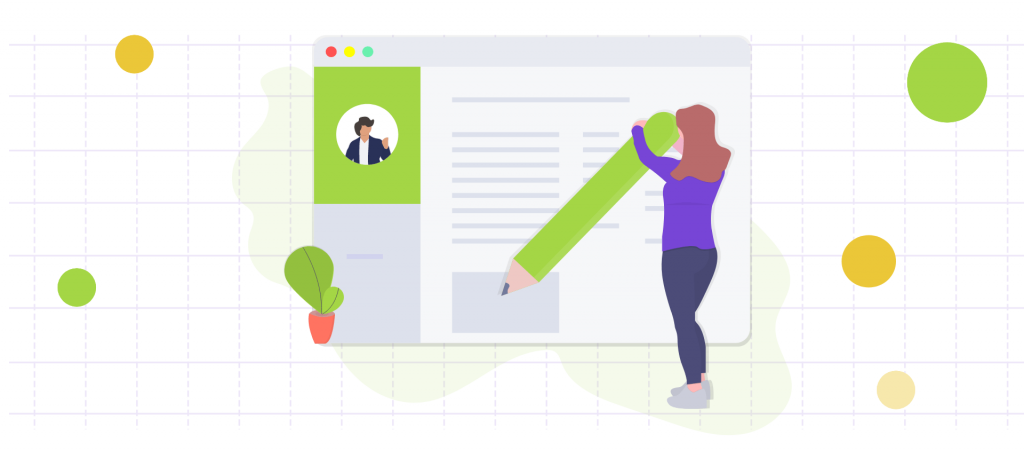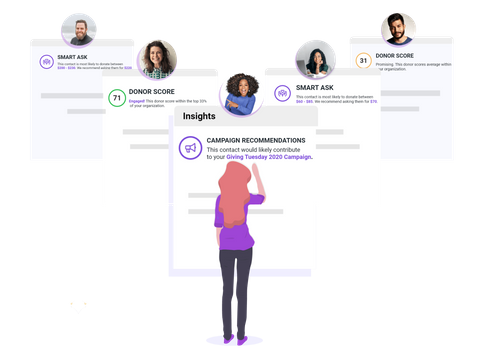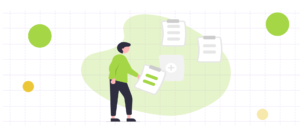How to Use Donor Personas to Raise More Money


Nonprofit marketing is a crowded landscape. With so many organizations looking for support from a finite number of potential donors, the task of creating marketing materials and messaging can feel daunting.
How can you really know that what you’re writing at 9:40 p.m. on a Tuesday night is going to resonate with the person you send it to tomorrow?
A great place to start to ensure that your nonprofit marketing efforts do not fall on deaf ears is to get to know your audience better so that you have a foundation of understanding that lets you create better, more specific, more impactful content. Creating a series of donor personas and documenting them in donor profiles can help you target specific groups and tailor your outgoing media to appeal to those groups in a way that helps your organization realize more successful fundraising campaigns.
FREE Donor Persona Template
Identify and target the ideal donor for your organization.
Learn how with our step-by-step donor persona creation guide and template.
What is a Donor Persona?
Also called a donor profile or audience profile, a donor persona is a short document that outlines the traits and preferences of the people you are trying to reach, that is, your ideal donor. Often the profile will be written as if describing an actual person and may be semi-fictional, gathering attributes from real-world donors and combining them with imagined details. For example:
This description will be used by you and your staff to craft communications. Following this description would be a listing of pertinent information that informs how and when communication with the fictional Karen would be most effective.
By combining all of this information into a concise, easy-to-read document, you end up with a powerful tool that can be used by anyone in your organization to guide their outgoing messaging.
Why Bother?
Donor personas are a shortcut to understanding your supporters better, helping you to engage them more effectively, and ultimately, raise more money. They improve your communications while also streamlining your content creation process since you won’t be reinventing the wheel every time you sit down at your laptop. So it’s certainly worth the upfront effort when you start reaping the rewards later on.
A bonus that comes out of the donor profile process is that you may also identify gaps in your donor base. If you’ve identified your ideal donor, then scoured your database and discovered that you hardly have any ideal donors already on board, you can more easily direct your efforts to potential donors who fit that profile.
How to Build Donor Personas
Your goal should be to create three to five profiles so you can understand the nuances of each without getting lost in too many details. One or two profiles aren’t granular enough to make much of a difference. Six or more will have you writing so many emails you’ll end up with carpal tunnel syndrome. Start by collecting data from your existing database of supporters. Data points may include:
- Age
- Gender identity
- Political affiliation
- Location
- Household income
- Other areas of giving
- Education
- Religion
- Social media and online behavior
- Marital status
- Credit score
- Media consumption
- Brand allegiances
- And anything else relevant to your organization
Once you’ve got some solid data, it’s time to:
1. Segment Using Key Data Points
Choose two data points that you can use to segment your audience into useful groups, such as donor type (subcategories: first time, repeat, etc.) and age group (subcategories: baby boomer, millennial, etc.) These should be reasonably broad high-level categories that don’t have too many subcategories or you’re going to be doing a ton of work for the next step.
2. Conduct Interviews
For each subcategory, conduct detailed interviews with three to five audience members, digging deep into their demographics, beliefs, and preferences. Be sure to ask questions that specifically target areas of your organization that you want to know more about.
If you don’t have much of a social media presence, ask about which social networks your interview subjects are on. If you’ve been having trouble with email unsubscribes, ask about email preferences.
If you’re just starting out, you may choose to forgo phone or in-person interviews and send a questionnaire instead. While you won’t get as much detailed information, you will likely reach more people and end up with a broader data set that can act as a foundation for future versions of your audience profiles.
If you are courting potential donors who have not provided data directly to you, a great way to learn about them is to identify a nonprofit organization that you aspire to be like, then mine their annual report for information. Annual reports are often publicly available and packed with information on the types of people who give.
Lastly, when conducting your interviews, be sure to ask donors why they began their relationship with your organization. This will help you to understand their motivation for giving and extrapolate that motivation out to similar potential donors.
3. Analyze Your Data
When your interviews are complete, analyze your data, looking for patterns that let you generate three to five personas. Look for useful correlations that will help you in the future, for example, if you see a correlation between major donors who live in suburban areas outside of cities with populations greater than 700,000 and who aren’t on social media, it’s time to call your printer and start designing a flyer or use flyer templates.
Not all patterns will turn out to be useful, but it’s a good idea to start out by noting every pattern that you see. As you accrue more data and iterate your profiles over time, you may find that some patterns become outdated while others that previously didn’t seem useful are suddenly very valuable.
4. Write Profiles
Once you’ve established patterns in your data, it’s time to actually write your profiles. Start out like the example above, with a brief narrative summary that hits a few key points that are relative to your operation. Then, list characteristics in the following categories:
- Demographics – the cold, hard facts, like age, gender, occupation, etc.
- Identifiers/traits – softer data like family status and media preferences
- Giving history with your organization – include this even when writing profiles for potential supporters; you’ll need to make some inferences about likely giving history
- Challenges that keep this person from giving
- How your organization can help
- Quotes – use real quotes from your interviews
- Objections – list some common examples of pushback from supporters and how to overcome them
- Support assets – resources available to you that will help encourage this audience type to reach your desired outcome
- Motivation! What’s in it for them?
When your profiles are complete, make sure everyone in your nonprofit organization is familiar with them and how to use them. Periodically update your donor personas by doing new interviews and collecting new data in order to stay current – new trends, new social networks, and new economic and political situations pop up every day so it’s important that you keep pace. Consider making updates as part of your annual marketing plan.
How to Build Personas Using Keela
If you are a Keela user, there is an easier way to create donor personas quickly and automatically. Keela’s contact insights work together to give you the clearest possible picture of your donors – their interests, their giving history, whether or not they’re engaged with your organization, and how best to connect with each donor.
Keela goes a step further than profiling and uses algorithms to identify which individual donors you may want to invite to your campaign, how much to ask them for, and when in the year to reach out, all based on their individual giving history. It takes audience profiles to a whole other level. So while you still need to have audience profiles defined for communicating with new and potential donors, Keela will do much of the heavy-hitting for you.
See How Nonprofits Use Keela to Build Donor Personas
Get a glimpse of how Keela’s donor management system and contact insights work together to give you the clearest possible picture of your donors
Keela’s Intelligence Tools
Campaign Recommendations
Automatically predict which donors are likely to give to your next campaign
Smart Ask
Automatically tells you the ideal amount to ask for from each donor
Smart Ask Forms
Embed Smart Ask Forms in emails to ensure you ask for the right amount.
Best Way to Reach Out
Know exactly how your donor prefers to be contacted
Donor Readiness
Know how likely your donor is to donate within the next two weeks
Time of Year
Know exactly when a donor is more likely to give
Donor Score
Automatically rank donors according to giving behavior and categorizes them
Engagement Score
Automatically rank donors according to whether they’re socially or financially engaged with your organization
Talk to a Keela expert and see how we can help you raise more money. Book a demo here →
Just One More Thing
As you progress through the process of building donor profiles, whether you’re using Keela’s intelligent tools or manually combing through your contact lists, keep detailed records of what you did, where you found good data, what you learned, and any thoughts and ideas that you have for the future. The process of discovery is just as important as writing the profiles and you’ll be happy to have high-quality notes when you come back to it in a year or two.
FREE Donor Persona Template
Identify and target the ideal donor for your organization.
Learn how with our step-by-step donor persona creation guide and template.
Get Your Donor Persona Template
Identify and target the ideal donor for your organization.
Learn how with our step-by-step donor persona creation guide and template.



![Navigating Nonprofit Donation Receipts: Your Essential Roadmap [+Examples]](https://www.keela.co/wp-content/uploads/nonprofitdonationreceiptrequirements-960w-300x132.png)
